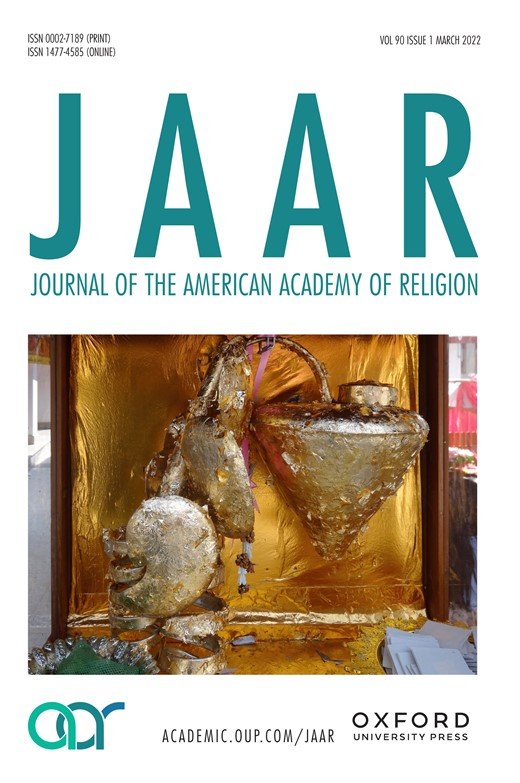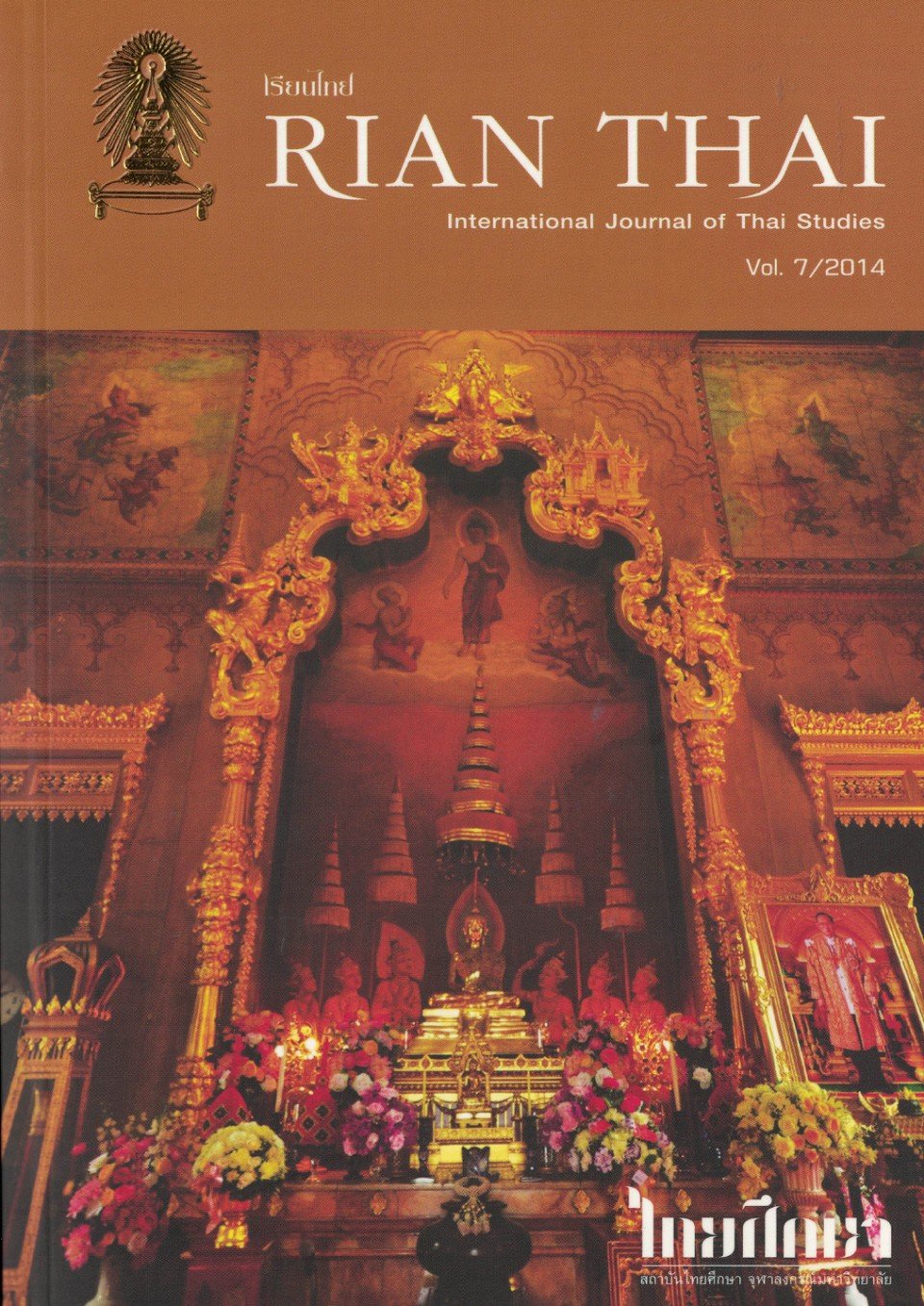The Buddha’s Busted Finger: Craft, Touch, and Cosmology in Theravada Buddhism
Journal of the American Academy of Religion, Volume 90, Issue 1, March 2022, Pages 52–85
Abstract
This article is about the bodily connection between Theravada Buddhist craftspeople, monks, and laypeople to the objects they create and touch. Textual and contemporary accounts of Buddhist material production emphasize the importance of physical touch in the formal aspects, embodied efficacy, and social salience of Buddhist objects, including Buddha images, brick stupas, and shrines. Here, I explore how the hands of skilled and unskilled Buddhist craftspeople manipulate, form, and connect divine, material, and social expressions of Theravada Buddhism. The handiwork of Buddhists gestures towards the ethical possibilities and cosmological significance of religious crafting, installation, and construction. Drawing on a variety of Theravada Buddhist sources, this article introduces “religious building” as a usable analytic category that can reveal why religion itself is often organized around, and generated through, acts of material and spatial production.
Changing Sīmā, Changing World
In Sīmās: Foundations of Buddhist Religion. 2022. Edited by Jason A. Carbine and Erik Davis. Honolulu: University of Hawaii Press: 125–147
Excerpt
“The early Dhammayuttika reformation was enacted due to Mongkut’s embrace of Mon interpretations of sīmā space specifics and ordination ritual practices: favoring udakukkhepa-sīmā as the site of monastic ordinations, and the noncanonical daḷhikamma as a safeguard against lineage deterioration. While still a monk, Mongkut expressed to Dhīrānanda his belief that the various commentaries that deal with sīmā space configurations were too confusing and varied to be of any use because they did “not provide a [unified] method or opportunity for practitioners to follow.” Mongkut abandoned these latter commentaries, not because they were postcanonical, but because they were conflicting and confusing. He was happy to adopt the Mon approach to sīmā and the daḷhikamma, even though they were based on postcanonical views, because they offered solutions to a particularly vexing problem” (139–140).
(With Anne Hansen) Reform: Ideas and Events in Modern Theravāda Reformism
In Routledge Handbook of Theravāda Buddhism. 2022. Edited by Stephen C. Berkwitz and Ashley Thompson. Abingdon: Routledge Press: 83–98.
Excerpt
“In this chapter, we examine how the Theravāda was constituted and reconstituted in the modern era through a number of reform movements that unfolded in the nineteenth and twentieth centuries. Importantly, this era saw the emergence of reformism as a pan-Asian phenomenon, crossing Buddhist schools, sects, local and state boundaries, and continents within the context of modern developments in the realms of politics, ideology and media. Some of the most salient themes and important historical hallmarks of this period included political centralization and state-making, colonial occupations, decolonization and nation-building, shared conceptions of Buddhist prophetic temporality, the circulation of new scientific, religious and political theories, the impacts of state violence, and the emergence of new media forms such as print” (84–85).
Structures of Suffering // Objects of Rapture
In Creations are Numberless, I Vow to Free Them. 2020. Houston: David Shelton Gallery. (Published in conjunction with the exhibition of the same name).
Excerpt
“The false division between name and form that orients so much casual experience of the world is blurred by the intricacies in Michael Velliquette’s recent work. Texture triumphs over text when paper completes its chrysalis. Manuscripts only mediate illumination when fully flowered and laid bare. Here contour runs circles around folded uniformity. Deep shadows shade caverns of monochrome where rolled and scored ornaments stand sentinel. Light tumbles through gauzy mazes before gently throwing itself back into the air.”
Labels and the Residue of Meaning
Craft Desert 2 (no. 2). 2020. San Diego: Craft Desert HQ.
Excerpt
“The aesthetic goals of craft serve political and economic regimes of oppression as often as they serve those who fight against them. Craftivists™ Craftipalists© and Crafascists® all knit one, purl one with the same needly precision. “
Making a Modern Image of Jīvaka Komārabhacca
In Buddhism and Medicine: Modern and Contemporary Voices. 2019. Edited by Pierce Salguero. New York: Columbia University Press: 147–157.
Excerpt
“This short account is about the work of art in the realm of miraculous reproduction—a hallmark of Buddhist material and spatial production that weaves through the tapestry of Buddhist time and place. From ancient chronicles to contemporary rumors, accounts of Buddhist material and spatial production are imbued with miraculous events and divine interventions. Indeed, the production of Buddhist materials and spaces often include the direct incorporation and collaboration of various nonhuman/numinous powers. Of course these objects and spaces, and the stories of their creation are always framed by the historical and cultural contexts in which they unfold.”
Partners in Power and Perfection: Khruba, Construction, and Khu Barami in Chiang Rai, Thailand
In Charismatic Monks of Lanna Buddhism. 2017. Edited by Paul Cohen. Copenhagen: Nordic Institute of Asian Studies Press: 87–114.
Excerpt
“Acts of Buddhist material production stem from and produce a variety of human relationships. Some of the more powerful and significant of these relationships are defined along the lines of barami. Beyond the khu barami relationship between Khruba Kham La and Khruba Intha mentioned above, Chiang Rai Buddhists use the term barami to explain the relationships between amulets and their creators, disciples and their khruba, Buddhist craftspeople and their specialized work, and monks with each other.”
In Conversation with Nidhi Eoseewong’s ‘Islamophobia in the Upper North’
Prachatai English, March 9, 2016.
Excerpt
“Buddhist thought in South and Southeast Asia has always been globally informed, specifically amongst the monastic literati. What we are seeing now is an unfortunate development amongst the globally connected, Buddhist educated elite who travel throughout Asia and the west and interact with a variety of religious and political thought. The domestic conflict of the chaos in the Deep South, and the recent Erawan Shrine bombing, prime this population to be open to anti-Muslim sentiment. Sadly, as educated, liberally-minded monks look to the global atmosphere for answers to their own domestic unrest, they encounter rampant Islamophobia, instead of religious tolerance. “
The Constant Uncertainty
In Constant Uncertainty, Angkrit Ajchariyasophon. Bangkok: 338 OIDA Gallery. (Published in conjunction with the exhibition of the same name).
Excerpt
“Many years ago, Angkrit arrived at one of his art openings in full SCUBA gear—mask, flippers, wet suit. He moved about the crowd, waving and shaking hands, people not knowing whether they should gawk at him or politely look at the pictures on the walls. Tonight you are supposed to politely look at the pictures on the walls. Tonight Angkrit has arrived dressed in his artist outfit, which is equally as absurd as a wet suit. “
Efficacious Space: An Introduction
Rian Thai: International Journal of Thai Studies Volume 7, 2014, pages 1–18.
Abstract
Taking into account textual, theoretical, and material evidence, this article makes a case for understanding the power of sīmā space as being linked to the performative and ritual actions of the sangha, as opposed to cosmological or cosmogonic referents. This article uses this specific type of Theravadin spatial arrangement in order to broaden the study of religious space, and to make theoretical room for religious spaces that do not necessarily fit into dominant sacred-space theory. Specifically, this article argues for a new theoretical category of religious space, known as “efficacious space,” which is space that is established according to specific criteria, which by virtue of those criteria, empowers people to effect transformation within that space.









